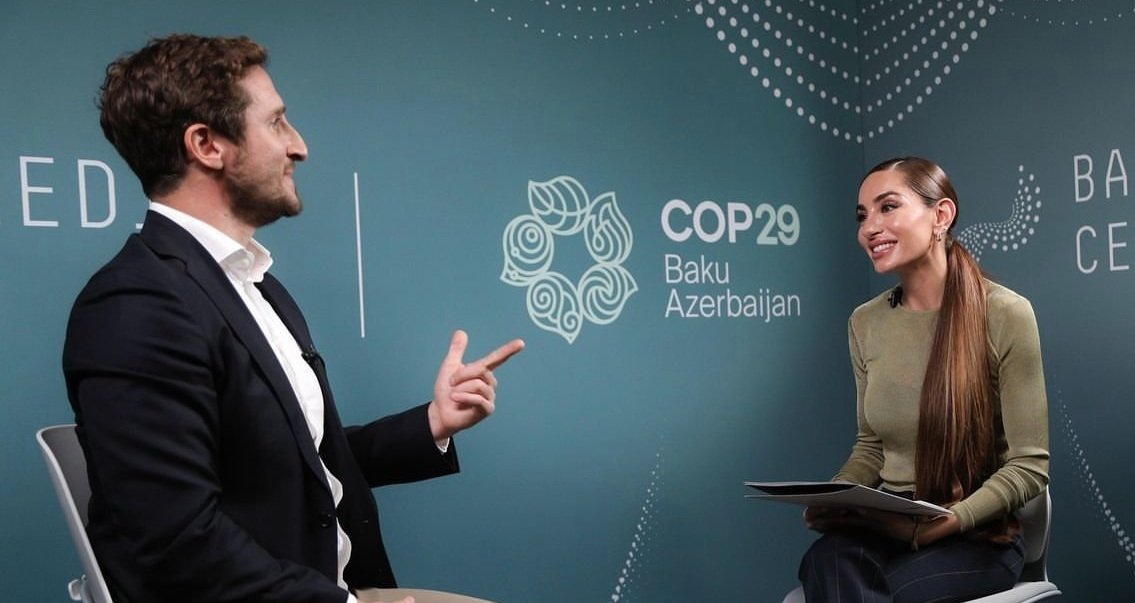Hope and Frustration at COP29
By Matthew David Kaplan
December 2024
COP29 was an amazing and terrible experience. Rare to start a post like this, but the contrast between my personal experience in Baku, Azerbaijan, and the hollow “commitments” from policymakers to stop and reverse climate change at this year’s United Nations Climate Conference of the Parties was beyond stark. On one hand, I am profoundly grateful to have met so many incredible people—filmmakers, expedition leaders, marine biologists, artists, and passionate advocates from all over the world; together, we comprised the FINS Initiative—Fighting for International Nautical Species. On the other hand, I watched governments fail to take even remotely meaningful steps to address the escalating climate crisis.
Inspiring connections
Every year, tens of thousands of people—delegates, policymakers, special interests, scientists, artists, and activists—convene under the pretense of fixing climate change. Meanwhile, they produce nothing but hot air as the planet continues spiraling towards its demise: wildfires, floods, rising seas, melting polar icecaps—threatening wildlife, livelihoods, entire nations, and even human existence. Even if you think this is an exaggeration, it’s not. I wish it were. Thousands of climate scientists have made predictions over the past three decades—many dismissed or ridiculed—that have come true, and faster than expected. Maybe it’s time we listen to their warnings about the next three decades. If you haven’t read the research that’s come out over the past 18 months, let me assure you: it’s scarier than you can imagine.
Most of the people I met at COP29 were extraordinary humans. From our FINS Initiative team, to delegates and government officials genuinely committed to tackling climate challenges, to entrepreneurs developing new tech, and to college students who will ultimately be the ones to whom this falls. Thousands of people like this came from every corner of the globe to share ideas, build connections, and imagine solutions. A life-sized sperm whale installation reminded the world what we’re fighting for. The conversations were powerful—students, activists, filmmakers, and more, all united by the belief that while governments hesitate, we can’t afford to. The passion in the FINS Initiative pavilion was a sharp contrast to what played out in the formal negotiations just down a long series of corridors in big rooms with no windows, lots of chairs, and unfriendly security guards standing outside.
The $300 billion illusion
At COP29, developed countries made “grand” gestures, ultimately pledging $300 billion annually by 2035 to help developing nations combat climate change. Triple the previous $100 billion target, it may sound impressive—until you realize that global subsidies for the energy industry exceed $1 trillion annually, and the details of the climate pledge are non-existent. How exactly will this ramp up over time? No one knows. Will it gear up quickly in the early years? Highly unlikely. Most likely, the majority of this $300 billion annually won’t show up until the 2030s, when leaders can conveniently pass the buck to their successors. And did I mention that by most accounts, developing nations collectively need more than $1 trillion per year to deal with the challenges of climate change and successfully navigate an energy transition?
Then there’s the matter of who pays. No surprise here: the agreement doesn’t spell that out either. Are we supposed to believe countries will happily figure out their “fair share” without years of bickering? And let’s not even get started on enforcement—there’s no mechanism to ensure anyone follows through, let alone delivers funds on time. And of course, there’s the need for predictability, adequacy, and accountability—three things that apparently didn’t make the cut in the COP29 “agreement.” But don’t worry, I’m sure this will all sort itself out... or not.
The power of the people
Ultimately, I believe it’s up to us—all 8.2 billion of us, as consumers and voters—to tackle the climate challenges our world faces. It’s our responsibility to educate ourselves, shift our behaviors, and, in doing so, reshape the incentives that drive corporations to change. This means influencing how companies produce, use resources, and transition to circular systems with far less waste, all while striving for true net-zero operations.
We all can start by eating less fish and animal products, learning about the sources and impact of the consumer goods we use (like avoiding beauty products that contain shark oil), reducing single-use plastics, favoring companies that are more resource-efficient, and buying less clothing. And perhaps most importantly, we need to reconnect with nature itself—because when we truly appreciate what’s at stake, we fight for it.
I will never underestimate what humans are capable of, what we can accomplish when we need to. Through this COP29 experience, I retain hope—not in policymakers, governments, or international organizations, but in us. In fact, I would say I have a renewed sense of hope. I’ve seen firsthand from the presentations, roundtables, and conversations our FINS Initiative team had with those we met in our pavilion that people genuinely care when you explain what this term “climate change” actually means for them, their children, and their grandchildren. We humans are capable of extraordinary things, and if enough of us act, we can create a different ending than the one being written as you read this. And by the way, “enough” isn’t as high a number as you’d think. There is a tipping point that will likely happen when just a small percentage of people (think 5–10%) change. If you’d like to renew your own sense of hope, go read the research on this fact. The future isn’t written. If it were up to me, I’d cancel COP30 and campaign to change consumer and voter behavior.





